If you have assigned a WebSphere MQ transport to the transport map, you can override some of the WebSphere MQ extended attributes set at the enterprise level and the extended attributes set in the transport. Additional protocol specific context information can be added to the messaging header such as the messageId, correlationId, and the priority and persistence characteristics of the WebSphere MQ message.
When you specify extended attributes at the transport level, all trigger and transport map pairs using that transport will have the same extended attribute settings. The reason for using the extended attributes feature for a transport map rather than a transport is that you will have more control over which data items are sent to the endpoint enterprise application program. You can associate a map variable set in the Input tab with Message ID and Correlation ID.
The following assumes that you have specified a WebSphere MQ transport for the transport map and created an Input tab and added an ASCII comma delimited payload.
The Input tab might look like this:
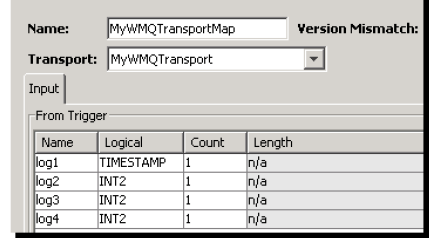
This is the source data that is then used to build a payload for the outbound ASCII messages.
The ASCII payload section might look like this:
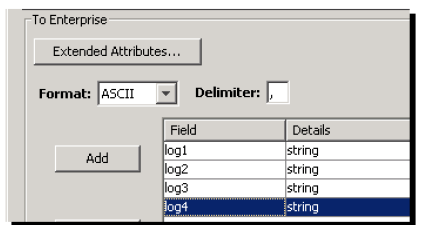
The content of these payloads contain map variables from
the Input tab. Additional context
information can be added to the messaging header (Message
ID and Correlation ID).
Follow these steps:
- From the Transport Map window, go to the To
Enterprise section.
- Click Extended Attributes.
The Extended Attributes window appears.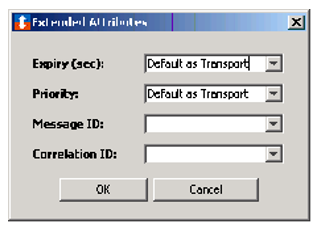
The following describes the parameters on the Extended Attributes window that you can set to override values set for the transport or the WebSphere MQ extended attributes set at the enterprise level.
Expiry and Priority parameters
If you accept Default As Transport for
both the Expiry and
Priority parameters, the transport map
will take the attributes as specified for the transport for
these parameters.
You can also change the value of the
Expiry parameter to
Unlimited in which case the message will
never expire on the queue. You can also type a numeric
value as the expiration time interval of every message sent
by the transport.
The Priority parameter lets you select a
numeric value between the numbers zero and 9 that will be
used by the transport map.
If you select Default, the WebSphere MQ
value set at the enterprise application program level will
be used.
Message ID and Correlation ID
Using the map variables defined for the transport map, you can reset the Message ID or CorrelationID parameters to the transport map level.
The MessageID parameter value specifies the WebSphere MQ message ID that will be set on any MQ message being sent out by the transport. From the Message ID parameter, you can select a map variable.
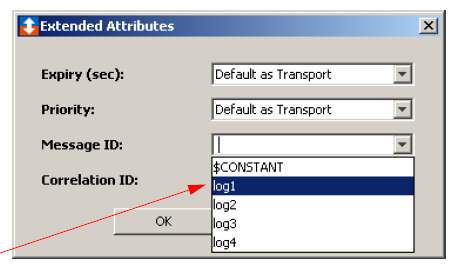
The Message ID parameter will contain a list of the map variables from the Input tab. At runtime, the value will be stored in the WebSphere MQ messageID field.
The CorrelationID parameter value specifies the WebSphere MQ correlation ID that will be set on any WebSphere MQ message being sent out by the transport. You can also select a map variable for the Correlation ID.
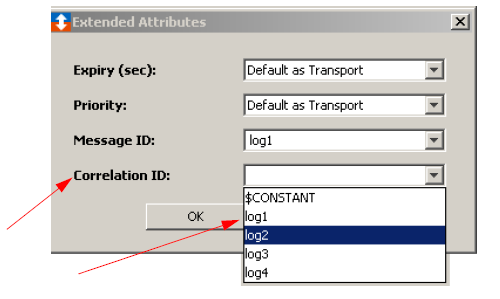
The Correlation ID parameter will contain
a list of the map variables from the Input
tab. At runtime, the value will be stored in the WebSphere
MQ correlationID field.
When you create the trigger, you must also associate the PLC device variable with these map variable.
Related Topics
Defining an ASCII message payload
Creating a payload of freeform text